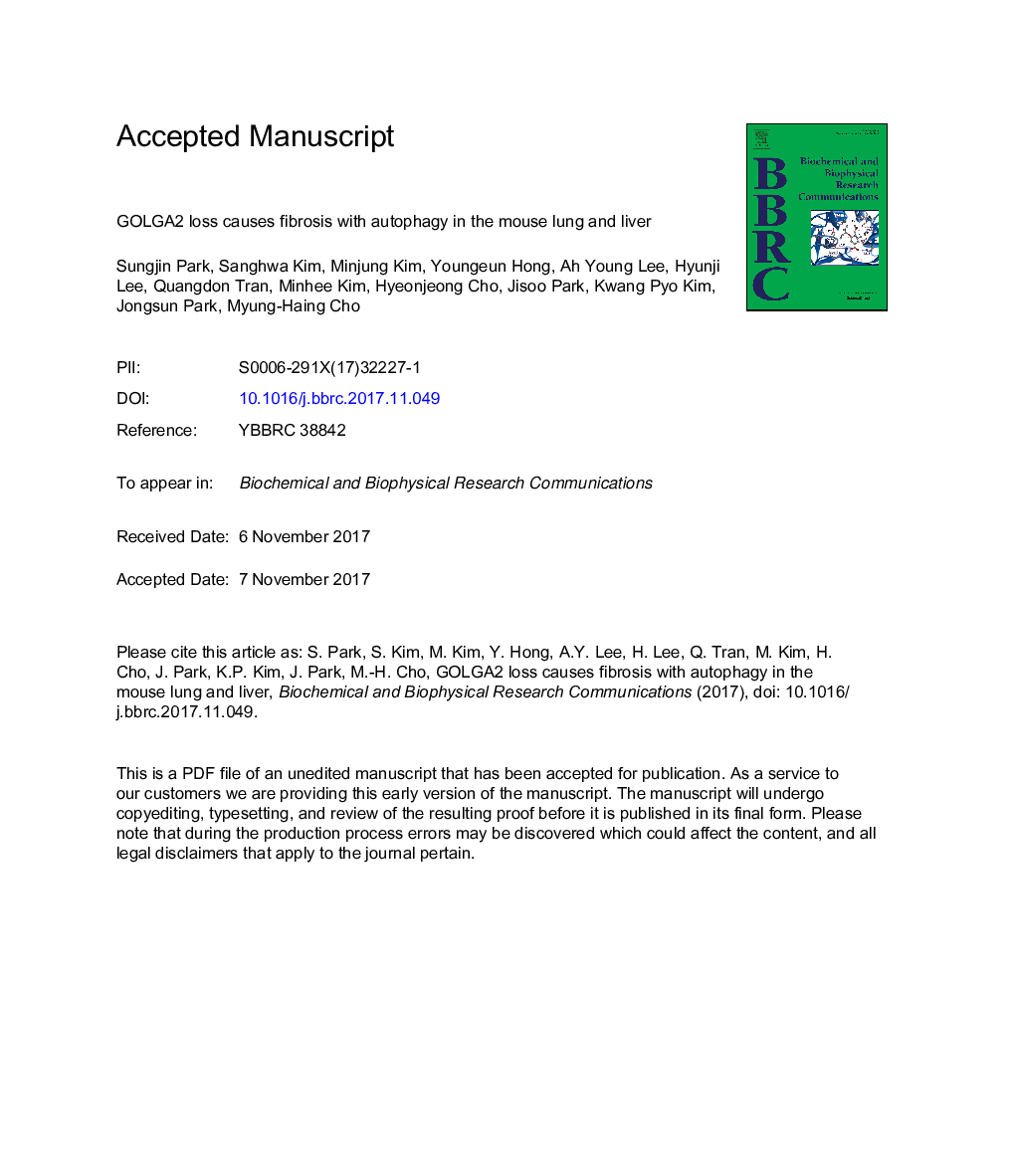| Article ID | Journal | Published Year | Pages | File Type |
|---|---|---|---|---|
| 8295743 | Biochemical and Biophysical Research Communications | 2018 | 21 Pages |
Abstract
Autophagy is a biological recycling process via the self-digestion of organelles, proteins, and lipids for energy-consuming differentiation and homeostasis. The Golgi serves as a donor of the double-membraned phagophore for autophagosome assembly. In addition, recent studies have demonstrated that pulmonary and hepatic fibrosis is accompanied by autophagy. However, the relationships among Golgi function, autophagy, and fibrosis are unclear. Here, we show that the deletion of GOLGA2, encoding a cis-Golgi protein, induces autophagy with Golgi disruption. The induction of autophagy leads to fibrosis along with the reduction of subcellular lipid storage (lipid droplets and lamellar bodies) by autophagy in the lung and liver. GOLGA2 knockout mice clearly demonstrated fibrosis features such as autophagy-activated cells, densely packed hepatocytes, increase of alveolar macrophages, and decrease of alveolar surfactant lipids (dipalmitoylphosphatidylcholine). Therefore, we confirmed the associations among Golgi function, fibrosis, and autophagy. Moreover, GOLGA2 knockout mice may be a potentially valuable animal model for studying autophagy-induced fibrosis.
Keywords
Related Topics
Life Sciences
Biochemistry, Genetics and Molecular Biology
Biochemistry
Authors
Sungjin Park, Sanghwa Kim, Min Jung Kim, Youngeun Hong, Ah Young Lee, Hyunji Lee, Quangdon Tran, Minhee Kim, Hyeonjeong Cho, Jisoo Park, Kwang Pyo Kim, Jongsun Park, Myung-Haing Cho,
